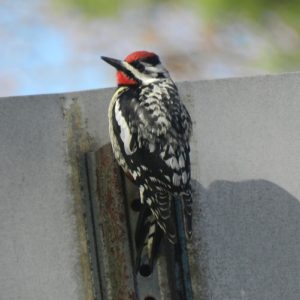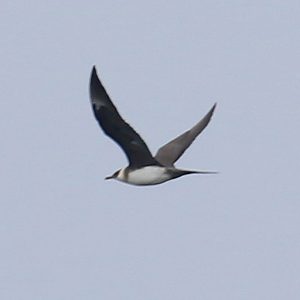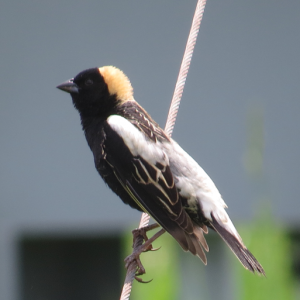
Among our most common forest birds is the Scartlet Tanager (canopy-nester, declining)
Primary Threats
By far the most significant threat facing this habitat group is development, which causes both direct loss of habitat and habitat fragmentation. Fragmentation reduces uninterrupted forest tracts to small and/or isolated patches of forest. It also introduces new threats caused by proximity to people and developed areas. Among these risks are predation by cats, raccoons, skunks, and squirrels, reduced reproductive success due to brood parasites like the Brown-headed Cowbird, fatalities from encounters with windows, and exposure to herbicides and pesticides.
By far the most significant threat facing this habitat group is development, which causes both direct loss of habitat and habitat fragmentation. Fragmentation reduces uninterrupted forest tracts to small and/or isolated patches of forest. It also introduces new threats caused by proximity to people and developed areas. Among these risks are predation by cats, raccoons, skunks, and squirrels, reduced reproductive success due to brood parasites like the Brown-headed Cowbird, fatalities from encounters with windows, and exposure to herbicides and pesticides.
By far the most significant threat facing this habitat group is development, which causes both direct loss of habitat and habitat fragmentation. Fragmentation reduces uninterrupted forest tracts to small and/or isolated patches of forest. It also introduces new threats caused by proximity to people and developed areas. Among these risks are predation by cats, raccoons, skunks, and squirrels, reduced reproductive success due to brood parasites like the Brown-headed Cowbird, fatalities from encounters with windows, and exposure to herbicides and pesticides.
By far the most significant threat facing this habitat group is development, which causes both direct loss of habitat and habitat fragmentation. Fragmentation reduces uninterrupted forest tracts to small and/or isolated patches of forest. It also introduces new threats caused by proximity to people and developed areas. Among these risks are predation by cats, raccoons, skunks, and squirrels, reduced reproductive success due to brood parasites like the Brown-headed Cowbird, fatalities from encounters with windows, and exposure to herbicides and pesticides.




